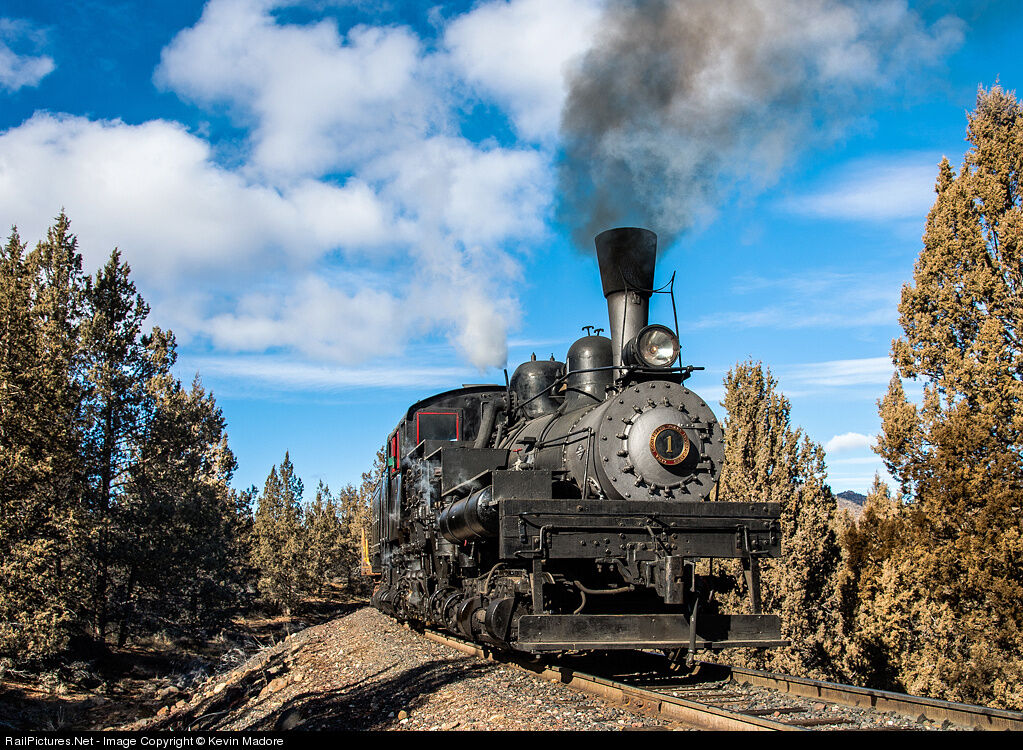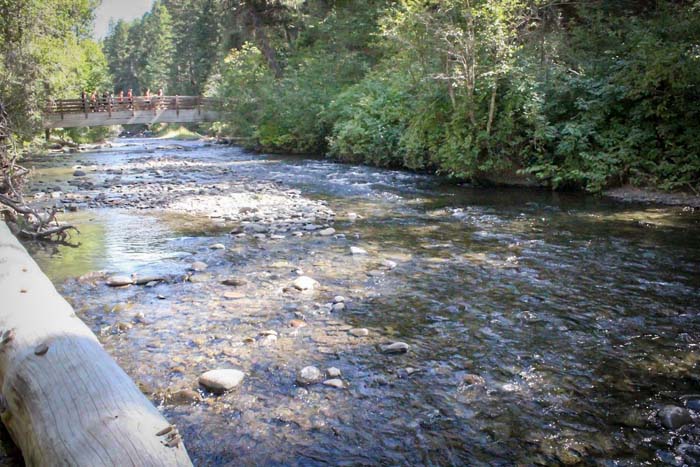Locomotive used in Union County logging operations for decades moved from Prineville to Portland
Published 11:00 am Thursday, February 15, 2024

- Smoke rises from the stack of Mount Emily Shay No. 1 in the mid-2010s near Prineville. The steam-powered locomotive, which was used for logging operations in Union County for three decades, in 2024 was moved from Prineville to Portland where it will be maintained and operated by the Oregon Rail Heritage Foundation.
PORTLAND — Mount Emily Shay No. 1 has a new home.
Trending
The historic steam logging locomotive, used for logging operations in Union County for three decades through the late 1950s, traveled by BNSF Railroad on a flatcar to its new home at the Oregon Rail Heritage Center, Portland, arriving in the early hours of Thursday, Feb. 15, according to a press release.
The 100-year-old locomotive had been in the care of the Oregon Historical Society for more than six decades when, in 2022, OHS chose to transfer the historic locomotive to the Oregon Rail Heritage Foundation to be its permanent owner.
“We are grateful to OHS and thrilled to be the new operators of the Mount Emily Shay No. 1,” Rick Franklin, president of the Oregon Rail Heritage Foundation, said in the release. “We look forward to entertaining and educating Oregonians of all ages on excursions powered by this grand old lady of Oregon railroading history.”
Trending
The Mount Emily Shay No. 1 was built 100 years ago by the Lima Locomotive Works in Ohio from a design by Ephraim Shay. Shays were geared workhorses of the timber and mining industries. After five years with the Independence Logging Co. in Aberdeen, Washington, the locomotive was sold to the new Mount Emily Lumber Co. in La Grande.
The locomotive was often used by the Mount Emily Lumber Co. to go up steep railroad spurs in forests to logging sites.
“Shays could get to places most other locomotives could not,” said Bob Bull, a La Grande historian who worked for the Mount Emily Lumber Co.
Mount Emily Shay No. 1 did much of its work in southwest Union County, where it hauled logs to the mill in La Grande.
Bull said the Mount Emily Shay was very well known throughout Union County while operating here.
“It is iconic,” Bull said of the locomotive. “It is part of our heritage.”
Shay locomotives can climb steep hillsides because of a low gear system that gives the trains power and stability. The low gear system also makes it much easier for shays to descend hills without losing control, Bull said.
A low gear system may be a huge help on hills but it’s a major drawback on flat ground where the top speed of shay locomotives is less than 20 mph, Bull said.
In 1955, the lumber company closed its rail operations and donated the Mount Emily Shay No. 1 to the Oregon Museum of Science and Industry, then located in Washington Park. OMSI concluded the locomotive was too big for the Vista Ridge tunnel and, in 1958, donated the engine to the Oregon Historical Society.
It went on long-term loan to the state of West Virginia in 1971 before returning to Oregon in 1994, with Prineville Railway serving as the borrower/caretaker/operator of the locomotive. When the city of Prineville requested an end to the loan agreement, and since OHS is not equipped to house nor operate a locomotive, the organization sought a new steward. A request for proposals was released in April 2022, and the Oregon Rail Heritage Foundation was selected to be the new owner of the Mount Emily Shay on Sept. 1, 2022.
“The Oregon Historical Society sincerely appreciates the support of the city of Prineville in stewarding and operating the Mount Emily Shay for decades,” OHS Deputy Museum Director Nicole Yasuhara said. “We are thrilled that the Mount Emily Shay will have a new, permanent home at the Oregon Rail Heritage Center, where it will be on view and used for excursions, balancing preservation and access to this important piece of Oregon history.”
Before entering service in Portland, the locomotive will undergo a boiler inspection. When ready, Mount Emily Shay No. 1 will pull excursions along the Willamette River. It will be the centerpiece of a new exhibit focused on railroading and the logging industry in Oregon and the Northwest.









